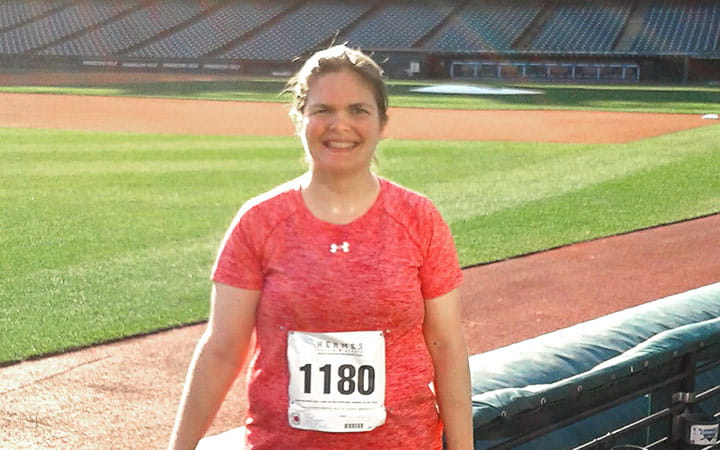Early Recognition of Stroke Symptoms and Fast Action are Key to Positive Outcomes
May 15, 2018

Stroke can strike at any age, but fewer deficits experienced by patients who called 9-1-1 quickly.
The room was spinning when Erin Vickers awoke early for work. Vomiting and unable to stand, she called her mother, who had difficulty understanding her 31-year-old daughter’s garbled speech. Her mother urged her to dial 9-1-1. David Wrentmore, 72, was taking a shower following an afternoon of yardwork. His wife, cooking kielbasa in the kitchen for their Easter celebration, heard him repeatedly dropping the soap. When Dora checked on her husband, he was leaning against the wall, unable to speak, his face drooping. She immediately ran for the telephone.
In both cases, loved ones recognized a stroke in progress.
Every 40 seconds, someone in the U.S. suffers a stroke – and every four minutes, one of those dies. Treatment is most effective when a stroke is recognized quickly.
Paramedics found Erin conscious but unable to move in her Brunswick apartment and rushed her to UH Cleveland Medical Center, a Comprehensive Stroke Center where neuroradiologist Robert Tarr, MD, performed a thrombectomy, extracting the clot from her brain.
Remember to act FAST:
FACE – Ask the person to smile. Does one side of the face droop?
ARMS – Ask the person to raise both arms. Does one arm drift downward?
SPEECH – Ask the person to repeat a simple sentence. Are the words slurred? Can he/she repeat the sentence correctly?
TIME – If the person shows any of these symptoms, time is critical. Call 9-1-1.
North Royalton paramedics immediately recognized David was having a stroke. They utilized iPads to livestream their advanced stroke assessment to the Emergency Department at UH Parma Medical Center, a Primary Stroke Center. While in transit, the ED prepared the clot-busting IV tPA and prepared the CT scanner, which would verify the location and type of stroke. Vascular surgeon Jeffrey Boyko, DO, performed the endarterectomy that cleared his carotid artery.
After physical, occupational and speech therapies, both Erin and David have been restored to relatively strong health with minimal deficits. Erin has returned to work and run in a dozen races since her stroke in 2014, ranging from local 5Ks to a half-marathon in San Francisco. This Easter, David was able to enjoy Easter dinner with his wife, three children and 10 grandchildren. He exercises several days each week at the local YMCA.
When the workouts are tough, they tell themselves they’ve been through harder times than this. “Even with the stroke, I keep that mentality,” says Erin. “There’s nothing preventing me from keeping going.”
If you or a loved one is experiencing symptoms of a stroke, time is critical. Act FAST. Call 9-1-1.
Read more or watch the video on UH’s innovative telestroke program.
Tags: Thrombectomy, Stroke


